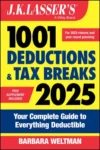5 Things You Didn’t Know About Health Savings Accounts

Health care costs may not be increasing at the same pace as in prior years, but costs for most people have not gone down. One solution for finding more affordable health coverage, especially for those who do not qualify for the refundable premium tax credit or Medicaid, is using a health savings account (HSA). It combines a high-deductible health plan (HDHP) with an IRA-like savings account. The tax savings from deductible contributions help defray the overall cost of health coverage. And there’s no tax on withdrawals to pay qualified medical expenses.
- HSAs can satisfy the individual mandate. Those seeking to comply with the individual mandate under the Affordable Care Act can consider using health savings accounts. HDHPs being sold today meet minimum essential coverage under the Affordable Care Act. Typically, they are bronze plans available through a government exchange or from a private insurer.
- Deductible contributions don’t require itemizing. Contributions you make to HSAs are deductible from gross income. They do not require any itemizing. However, you have to file Form 1040 and cannot use Form 1040A or 1040EZ.
- Unused savings carry over. If you don’t use up your annual contributions, then the unused amounts, plus any earnings on them, carry over indefinitely. They can be used in the future for qualified medical expenses, even if you are no longer covered by an HDHP at that time. And when you die, unused funds can be rolled over to a surviving spouse who can use the account for his/her own purposes.
- Contribution limits are rising. The deductible contribution limit for 2014 is slightly higher than 2013, and the limits for 2015 will also be higher than in 2014. Here are the deductible contribution limits:
2014
2015
Self-only
coverage$3,200
$3,250
Family coverage
$6,550
$6,650
Those covered by an HDHP who are at least age 55 by the end of the year can add another $1,000 to their HSAs.
- HSAs are barred to those 65 and older. Once you qualify for Medicare, you cannot make any further tax- deductible contributions to HSAs. However, you can continue to use the funds built up in your account. What’s more, if you tap the money for nonqualified expenses, you won’t be penalized (those under age 65 pay a 20% penalty on nonqualified withdrawals). But you will pay tax on the distribution if it isn’t used for medical expenses.
Conclusion
HSAs offer important advantages for addressing health care coverage. Take the time to explore this option before deciding on your 2015 coverage choice.



